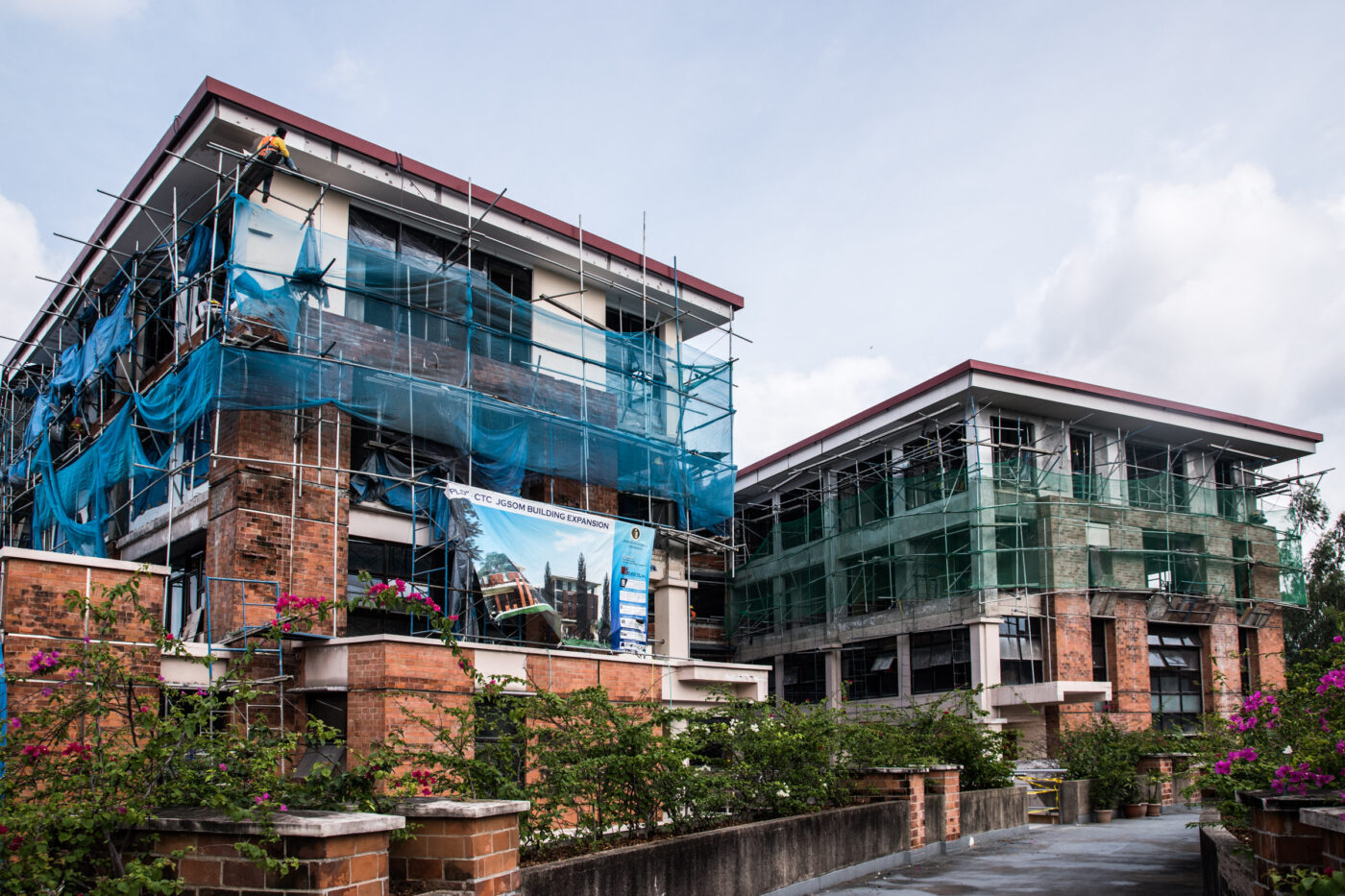DESPITE VARIOUS structural enhancements being carried out on campus, there will be no changes made to the class schedules and activity hours for student organizations, according to Acting Vice President for the Loyola Schools (LS) Maria Luz Vilches, PhD.
In a memorandum released by University President Jose Ramon Villarin, SJ on June 1, it was revealed that the David, Fermin, and Pacquing Halls of the Ateneo Grade School complex are currently being retrofitted due to the buildings’ proximity to the West Valley Fault (WVF).
The WVF, also known as the Marikina Valley Fault System, is a 100-kilometer fault line that runs through the cities of Taguig, Marikina, Pasig, and Quezon.
As a result of the retrofitting, Bellarmine Hall is being occupied by students of the Ateneo Junior High School while the aforementioned buildings are being modified.
An email sent by Vilches to representatives of various student organizations on June 25 stated that adjustments regarding class schedules and room assignments were no longer necessary.
The issue was resolved through a series of consultations and meetings with the representatives of the Council of Organizations of the Ateneo (COA) and various LS administrators.
Seeking alternatives
The recent unavailability of Bellarmine Hall to LS students and the ongoing reconstruction of the PLDT-Convergent Technologies Center (CTC) and John Gokongwei School of Management (JGSOM) buildings led to a decrease in the number of available classrooms used for both classes and organizational activities.
According to School of Science and Engineering Chairperson Luigi Del Rosario, a total of 19 classrooms were lost—11 from Bellarmine Hall and eight from PLDT-CTC and JGSOM.
However, the renovations on PLDT-CTC and JGSOM are expected to end before the first semester officially begins.
Only 11 classrooms and 19 time slots will be rendered unavailable for the first semester—10 time slots for Monday, Wednesday, and Friday, and nine time slots for Tuesday and Thursday.
Consequently, a total of 209 classes were in need of classrooms for the first semester, according to Del Rosario.
To remedy the shortage in classroom spaces, several LS offices and academic departments agreed to postpone their transfer to their new rooms to lend them for classroom use.
According to Vilches, the rooms offered by offices and departments sufficed to cater to the morning and afternoon classes that were supposed to be conducted in Bellarmine Hall.
Adjusting activity hour
On June 20, an emergency meeting was held among representatives of different student organizations of the Ateneo and officers of the Sanggunian to discuss the proposed activity hours by the Office of Administrative Services (OAS)
OAS suggested to move class schedules 30 minutes forward and to adopt a 3:30 PM to 5:00 PM timeslot every Tuesday and Thursday as the new activity hours.
The organization representatives did not concede to the proposed activity hour, because they had already scheduled their projects and activities to sync with the current activity hour, which is observed from 4:30 PM to 6:00 PM every Monday and Friday.
According to COA President Yesu Hernandez, “the proposed change in the class schedule and activity hour was found questionable and generally disagreeable by the organization representatives and so we came up with queries and counter proposals we forwarded to [Vilches].”
On June 24, another emergency meeting was held among Vilches, COA representatives, and various LS administrators to discuss a final resolution regarding classroom assignments and schedules for the first semester.
In her email, Vilches added that the Registrar’s Office along with the OAS “continued to work tirelessly” after the said meeting to account for the number of classrooms that will be used in the first semester.
“There is very little room in which to wiggle in these arrangements but at least we can say for now, sufficient,” Vilches said.
Strengthening connections
In the meeting with LS administrators on June 24, Del Rosario also took the opportunity to voice out the student representatives’ sentiment of how they felt deprived of their right to be consulted on the issue of moving class schedules.
According to Del Rosario, the LS administrators were apologetic, explaining that they couldn’t confer with the student representatives because the issue was a rapidly developing matter.
Furthermore, the administrators acknowledged the student representatives’ call for open and direct communication, through disclosing and relaying relevant information to students.
“I directly receive [memos] now from the [Office of the Vice President for the Loyola Schools] instead of getting them from the [Office of the Student Activities] where the information is very red-taped. I am also now part of a lot of their directories so when information comes, I now receive it first-hand,” said Del Rosario.
He said that the meeting turned out to be “beneficial for both sides,” now that information is relayed in a more efficient manner.
Moreover, Hernandez lauded the efforts of the various offices of the LS who worked hand in hand in the re-arrangements of classroom assignments and schedules.
“We are glad that [the LS administrators] listened and I am hoping that it goes like this in the future,” Hernandez said.







